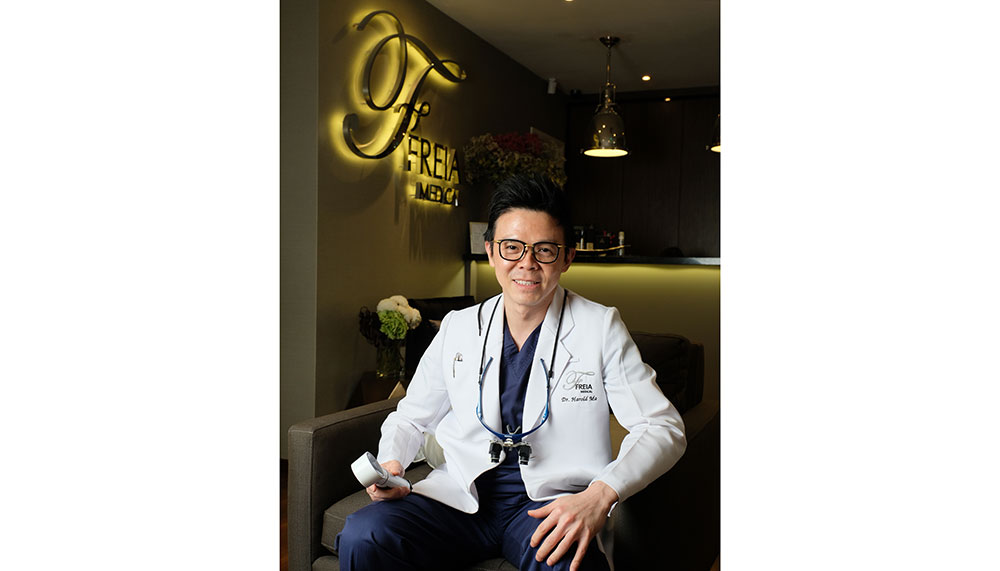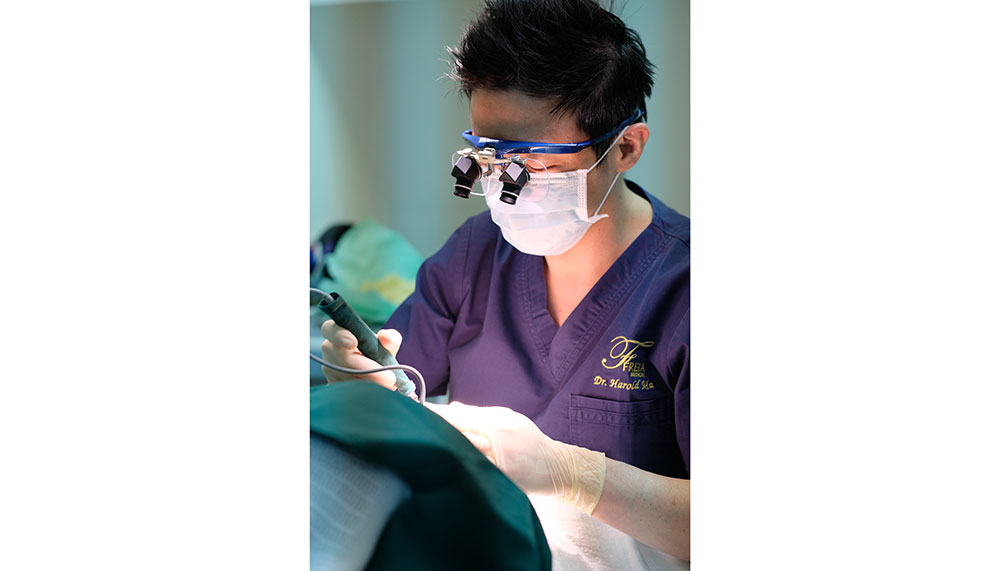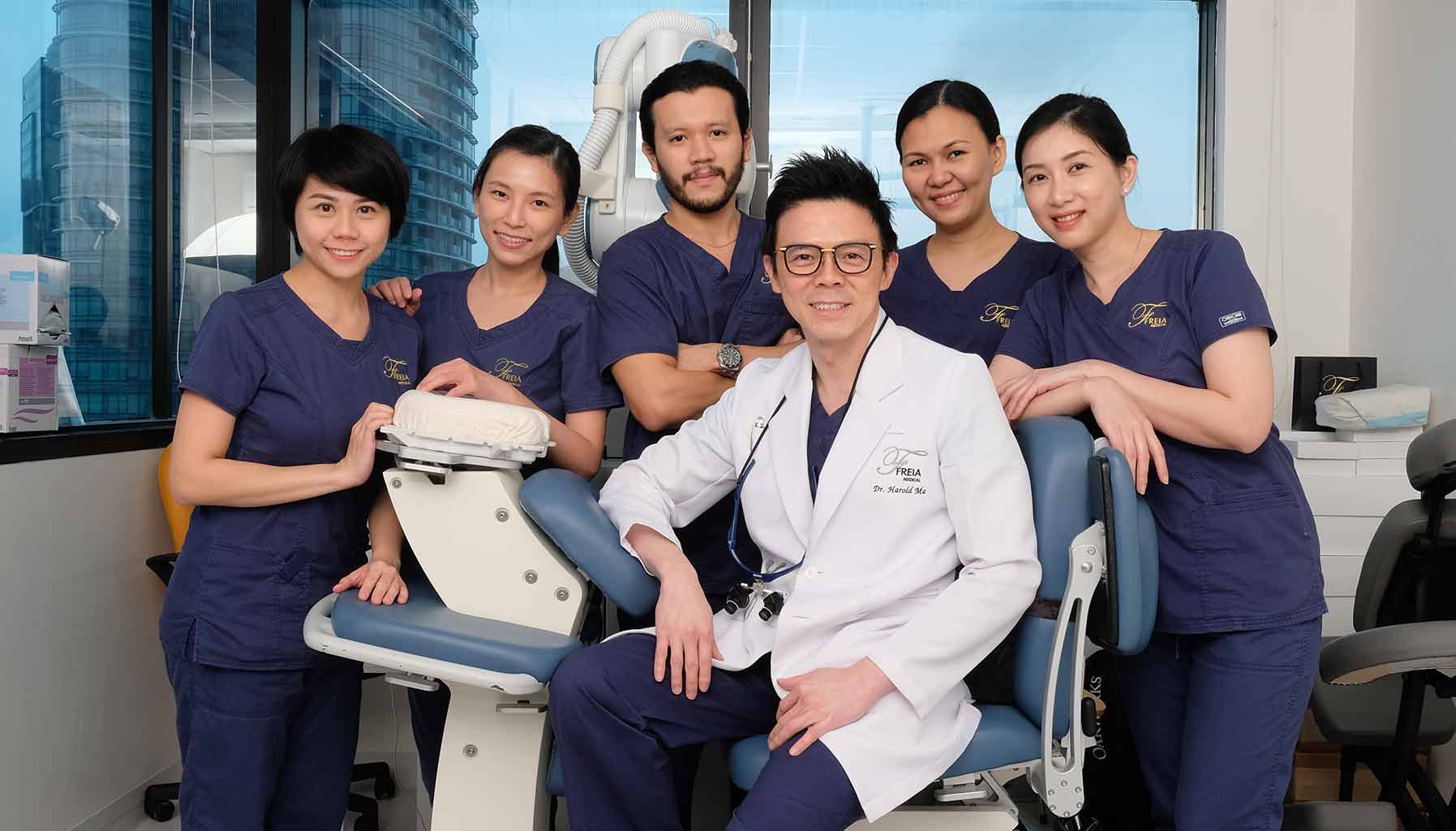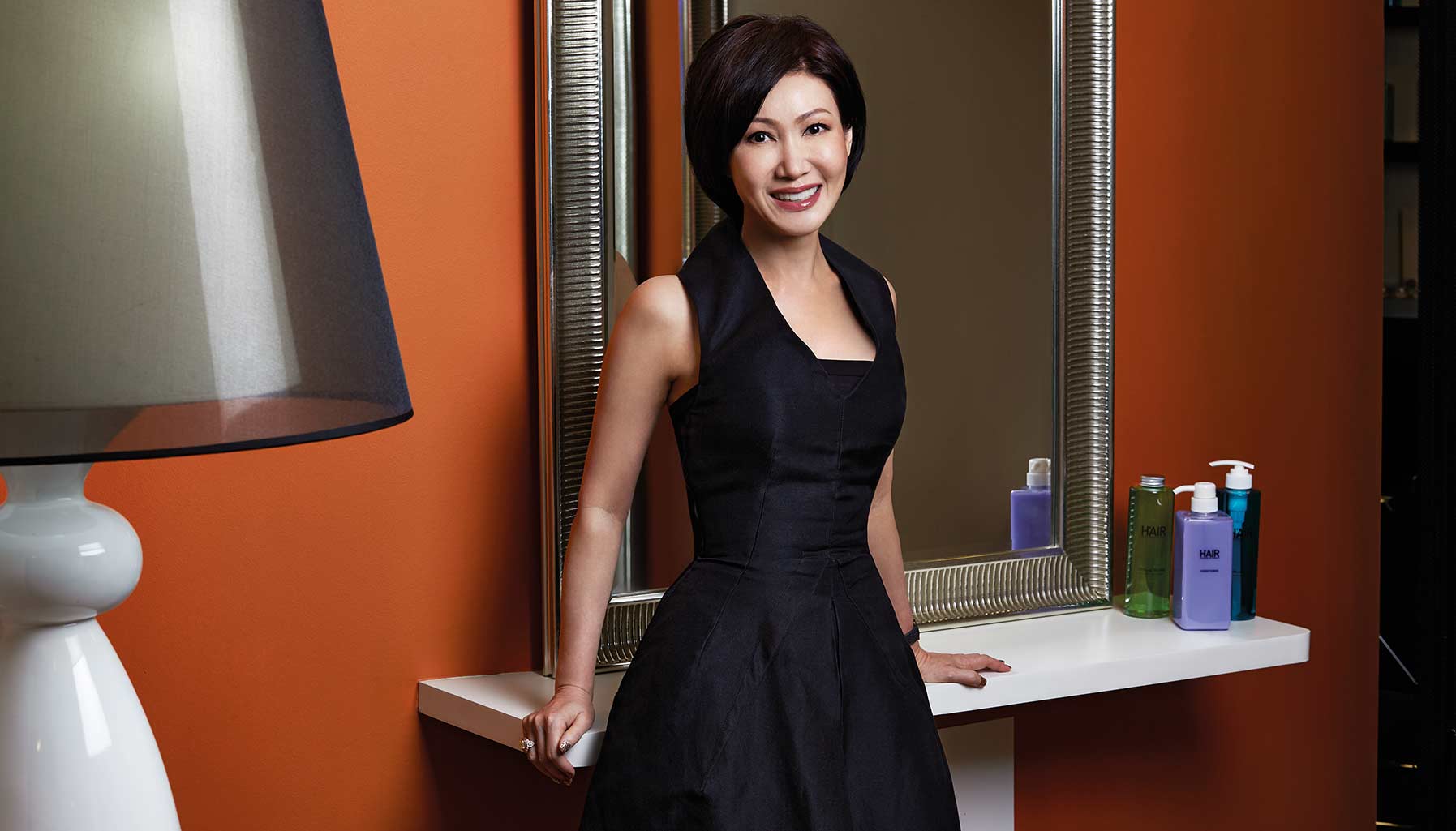Freia your mind
When your days are packed with high-powered meetings, the last thing you want to worry about is a thinning crown. If you are suffering hair loss, what you need are permanent solutions. The good news is, there are effective medical treatments that are also low on downtime, such as those provided by Freia Medical.
According to Dr Harold Ma, medical director of Freia Medical, most hair loss conditions — including androgenetic alopecia, or male pattern hair loss, female pattern hair loss and dormant stable alopecia areata — can be treated.

“In mild cases of hair loss, I may start them off with non-surgical options like oral medication, hair growth sprays, oral vitamin hair supplements or hair growth laser,” explains Dr Ma. “For those with more serious hair loss or looking for a more dramatic and significant improvement, a hair transplant is often the treatment of choice. Very often, it is a combination of a few treatments for the best and most long-lasting results. A hair transplant gives the most dramatic improvement in suitable patients.”
Being the gold standard, a hair transplant — which redistributes permanent, healthy hairs from what Dr Ma calls the “safe or permanent zone” at the back of the head to the more needy areas of the scalp — produces long-lasting, if not permanent results. Effectively reversing a balding pattern in suitable candidates, it has a high satisfaction and success rate of over 90 per cent.

The modern day Follicular Unit Extraction (FUE) hair transplant is a low-risk, minimally invasive and highly predictable treatment that has now largely replaced the more invasive Follicular Unit Transplant (FUT) or Strip Hair method. Now popular worldwide, transplanted hairs using the FUE method are expected to last at least 10 to 15 years on average, says Dr Ma.
The entire FUE hair transplant process takes around four to nine hours and costs between $8,000 and $16,000, depending on complexity and the number of grafts needed.

“Our clients generally take five to 10 days off work, after which they can resume all social and sports activities,” added Dr Ma, who has gained a reputation in the region for his expertise in the FUE technique using customised protocols and instruments.
“However, if the patient’s native existing hairs continue to thin over time, there may be a need to fill in these new gaps that occur. Hence, in patients who are still experiencing on-going hair loss, it is important to prevent further hair loss with oral medication or hair growth sprays in addition to a hair transplant.”



